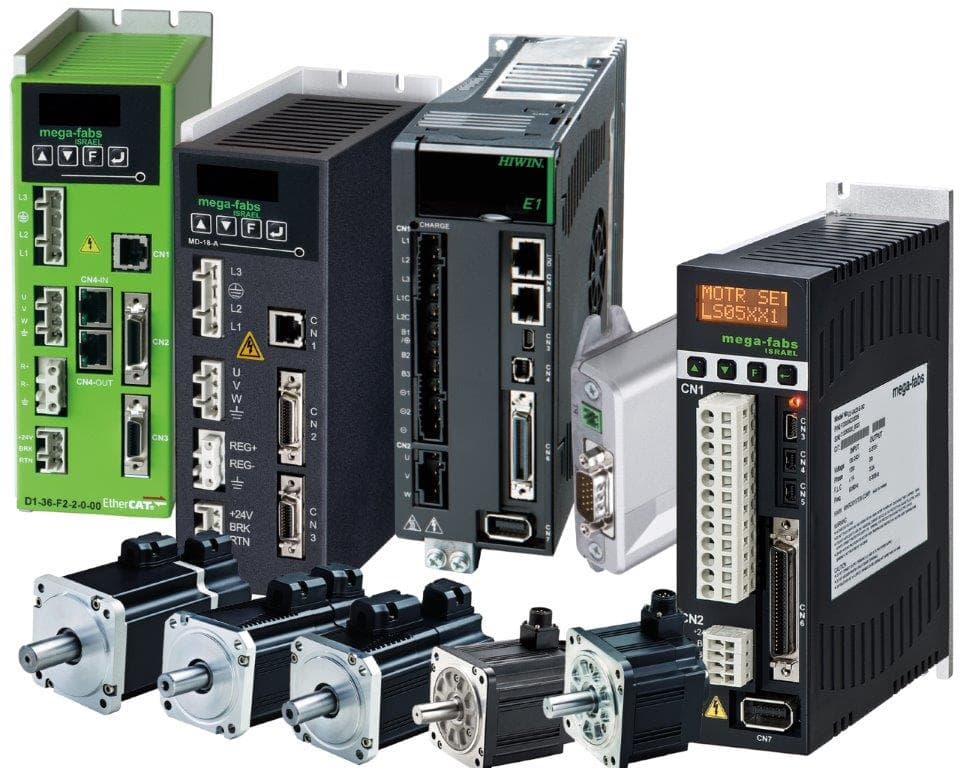Servo Motor Drive:
The choice of an electric motor is critical for every electromechanical project. When a project demands the greatest precision, we frequently consider the servo motor. A servo motor is a type of rotary or linear actuator.
It enables accurate control of angular or linear location, velocity, and acceleration. It also necessitates the use of a pretty complex controller. A specialised module built expressly for use with servo motors for frequent utilisation.
It is an electrical gadget that can precisely push or spin an item. A servo motor is essential if you wish to rotate an object at a certain angle or distance. It is just a motor that operates using a servo system. It comprises a suitable motor connected to a position feedback sensor.
If the servo control system works on DC power, it is a DC servo motor. If alternating current powers the motor, it is an AC servo motor. A very strong torque servo motor come in tiny and lightweight configurations. Because of these characteristics, they are useful in a variety of applications like toy cars, RC helicopters and aircraft, robotics, machines, and so on.
Servo Motor Drive Purpose:
With hundreds of thousands of technical discoveries throughout history, several of the most essential daily innovations have gone lost in the shuffle, and people have become oblivious to their significance over time.
Unbeknownst to most people, components such as the servo motor drive play a significant role in making people’s lives simpler daily. Because of their compactness and power, servo motors are widely used by businesses. Despite its small size, it generates a significant amount of power and is to be extremely energy-efficient.
The majority of servo users are manufacturers that use them to place control surfaces and spin things at exact angles and distances. The majority of servo motor users are manufacturers that employ servo motors in their machinery.
Types of Servo Motor Drive:
A typical servo motor drive has three wires: power, control, and ground. The size and form of these motors determine their usage. Because of their simplicity, affordability, and dependability of control by microprocessors, RC servo motors are the most prevalent type of servo motor used in hobby applications and robotics.
DC Servo Motor
In the subject of winding and armature winding, the motor utilised as a DC servo motor often has a separate DC supply. Control archives manipulate either the armature current or the field current. Field control has certain distinct benefits versus armature control. Similarly, armature control has some benefits over field control.
The control must be available to the DC servo motor drive based on the applications. Because of the low armature inductive reactance, DC servo motors respond very accurately and quickly to start or stop command signals. Similar equipment and computerised numerically controlled machines employ DC servo motors.
AC Servo Motor
AC servo motors are AC motors with encoders that use as controllers to provide closed-loop control and response. This motor may be precisely positioned and controlled as required for the applications.
These motors frequently have higher tolerance designs or stronger bearings. And some basic designs even employ higher voltages to provide more torque. AC motor applications mostly involve automation, robotics, CNC machines, and other applications that need a high level of precision and adaptability.
Positional Rotation Servo Motor
The most common form of the servo motor drive is the positional rotation servo motor. The o/p of the shaft revolves around 180o. It has physical stops situated in the gear mechanism to prevent rotating beyond specified limits to protect the rotation sensor.
These popular servos are usable in radio-controlled water, radio-controlled automobiles, planes, robotics, toys, and a variety of other applications.
Continuous Rotation Servo Motor
A continuous rotation servo motor drive is similar to a positional rotation servo motor in that it may rotate in any direction endlessly. Rather than setting the servo’s static location, the control signal recognises the speed and direction of rotation.
Depending on the command signal, the range of available commands causes the servo to rotate anti-clockwise or clockwise at varying speeds. This sort of motor is usable in radar dishes while riding a robot, or it is usable as a driving motor on a mobile robot.
Linear servo motor
Linear servo motors are identical to positional rotation servo motors, but with additional gears to change the o/p from circular to back-and-forth. These servo motors are difficult to locate, although they are occasionally available at hobby stores in which they utilise them as actuators in larger model aeroplanes.
Conclusion:
Servo Motor Drive is easily available from the Servo Drive Distributor as it is very useful in various industries such as computers, robotics, etc. The allotment of Servo Distributor in India is to make servo motor drives easily accessible in various parts of the nation.
For more info Contact Us- FSC Group India – Servo motor Distributor in India

